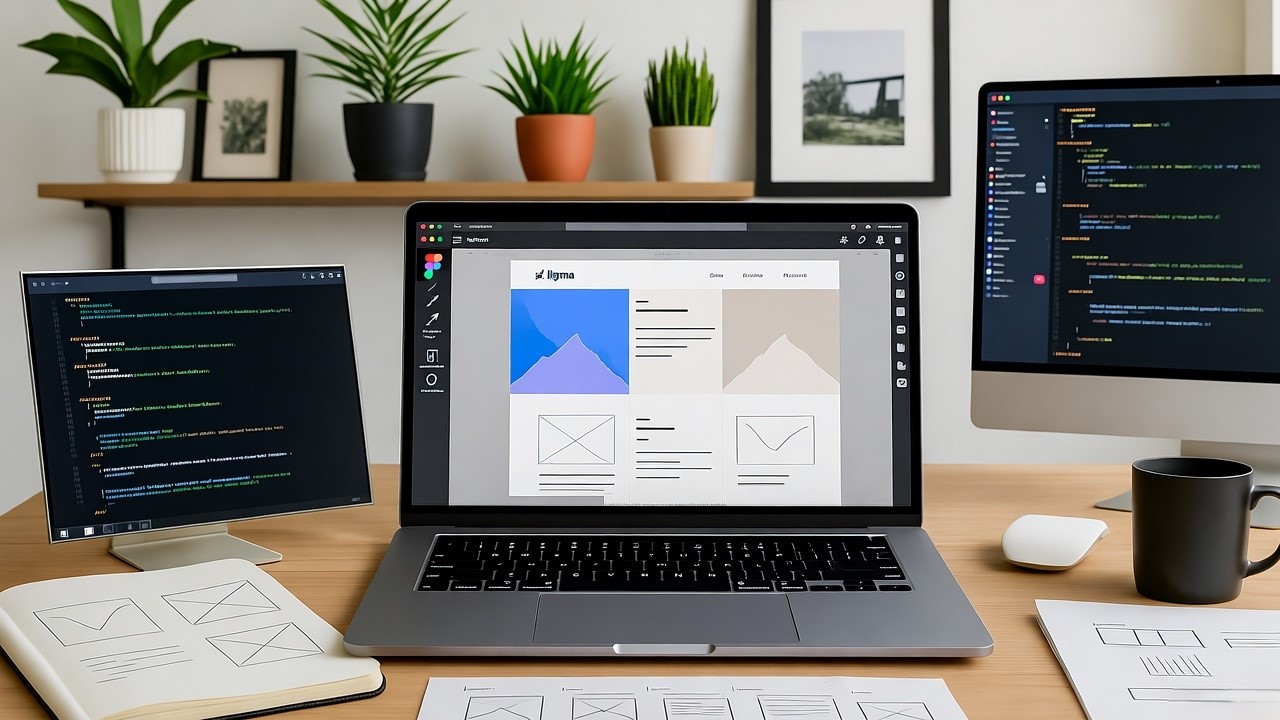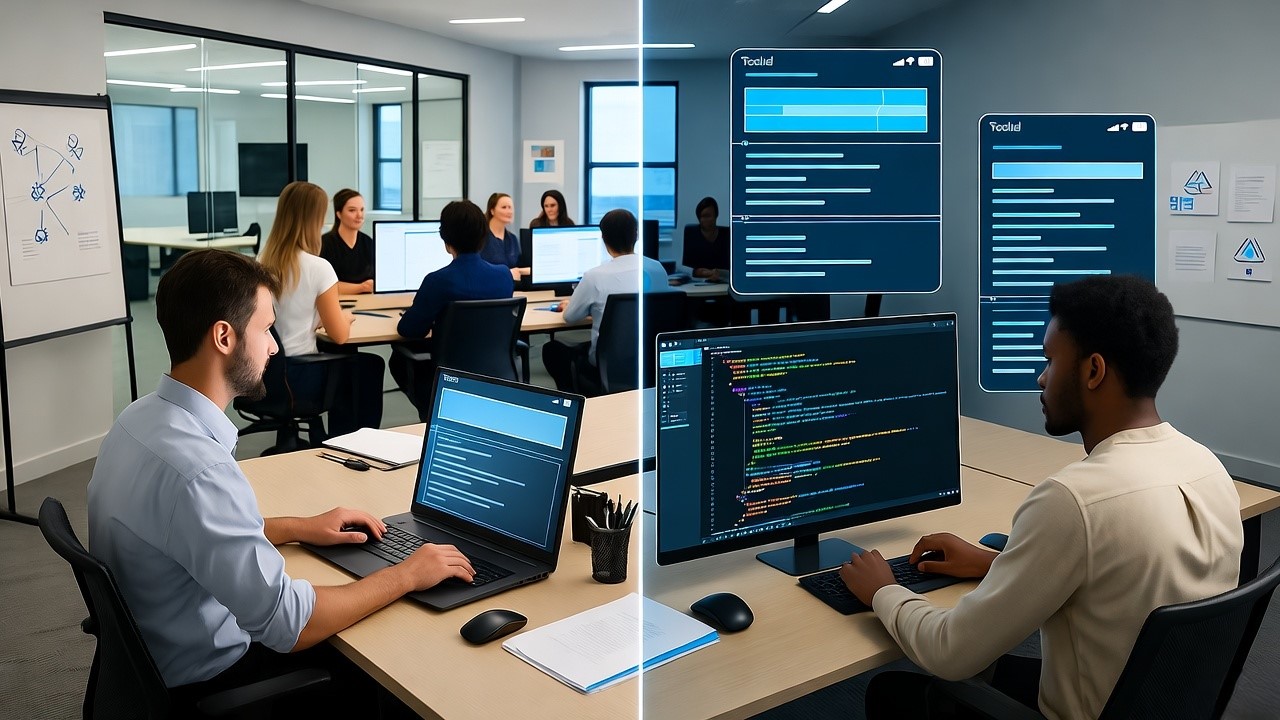Building Your Social Media App in 2025
I’ve spent the last five years at the intersection of design and development, helping over fifty US-based startups and SaaS founders translate their Figma mockups into functional, scalable products. One question I hear constantly is, “We have a vision for a new social network, but the development costs are staggering. Is there a real alternative to hiring a full dev team?” The answer is a definitive yes. The landscape of social media app builder platforms has matured, offering viable paths from prototype to production. For founders in the United States, navigating this landscape is no longer a luxury; it's a strategic necessity for capital-efficient growth.
The most effective way to build a social media app today is by leveraging a combination of modern design-to-code platforms and specialized no-code app builders, which can reduce initial development costs by up to 70% and cut launch time from months to weeks.
Why the "Build vs. Buy" Debate is Obsolete for Social Apps
The old model of raising millions for a two-year development cycle before launching a social app is broken. User expectations are too high, and market trends shift too quickly. The new paradigm is about agility.
You need to validate your core social loop, the fundamental interaction that keeps users coming back, before writing a million lines of custom code. This is where app builders shine. They allow you to test your hypothesis with real users without a massive upfront investment.
For a social media app builder in USA markets, this is critical. The competition is fierce, and user acquisition costs are high. Launching fast, iterating based on data, and achieving product-market fit is the only strategy that works.
Deconstructing the Modern Social Stack: What You Actually Need
Before choosing a tool, you must understand the core technical components of any social application. A robust social media app development platform must handle these fundamentals:
- User Authentication & Profiles: Secure sign-up, login, and customizable user profiles.
- Content Feed: A dynamic, algorithmically sorted stream of content (images, video, text).
- Real-Time Interactions: Likes, comments, shares, and direct messaging.
- Notifications: Push and in-app alerts to drive engagement.
- Cloud Storage & Database: A scalable backend for user data and content.
Traditional development builds these from scratch. A modern social media app creator bakes them in as pre-built, configurable modules.
The Designer's Shortcut: From Figma to Functional Prototype
This is my world. Many founders and designers come to me with beautiful, pixel-perfect Figma files. The gap between that static design and a working app has always been the most expensive and time-consuming part of the process. This is where Figma to code generator tools come in.
What a Figma to Code Generator Actually Does
These tools, like Anima, Locofy, and Figma's own Dev Mode, use AI and automation to convert your design layers into clean, production-ready HTML, CSS, React Native, or Flutter code. They don't build your entire backend, but they dramatically accelerate front-end development.
Key Benefits for US Startups:
- Speed: Cut front-end development time by 50-80%.
- Fidelity: Ensure the final product matches the design vision perfectly, eliminating costly back-and-forth.
- Efficiency: Allow your small team or solo founder to handle more of the development lifecycle.
The Inevitable Gap: Where Design-to-Code Falls Short for Social Apps
However, it's crucial to understand the limitations. A Figma to code generator website is a powerful accelerator, not a complete social media app builder.
- It’s Front-End Only: You get the UI code, but not the backend logic for feeds, real-time chat, or user management.
- Complex Interactions: A "like" animation might be coded, but the functionality of updating a count in a global database is not.
- Scalability Concerns: The generated code is a starting point. For a social app expecting high traffic, a senior developer still needs to optimize it for performance and scale.
Think of it this way: these tools give you the car's body and interior (the front-end), but you still need to build the engine and transmission (the backend) yourself.
The Rise of Integrated AI App Builders: A New Paradigm
This is the most significant evolution in the no-code social media app builder space. Platforms are emerging that don't just piece together pre-built modules; they use AI to understand your vision and generate a more cohesive application. This is where the conversation gets interesting.
Positioning Niral AI: Beyond Templates, Towards Intelligence
While many platforms offer template-based drag-and-drop, Niral AI positions itself differently. It acts as an intelligent social media app builder that uses AI to interpret your requirements and generate a more custom-feeling application.
From my analysis and hands-on testing for client projects, here’s where Niral AI stands out for a US-based founder looking to build a minimum viable product (MVP):
- AI-Powered Feature Generation: Instead of just picking from a list, you can describe a feature (e.g., "a swipeable video feed with a double-tap to like gesture"), and the AI will attempt to construct the necessary front-end and backend logic.
- Seamless Third-Party Integrations: For US startups, tool stacks are everything. Niral AI simplifies integrating critical services like Stripe for payments, SendGrid for email, and AWS for storage directly through conversational prompts.
- Scalable Architecture from Day One: The platform is built on cloud-native principles, meaning the apps it generates are designed to handle user growth without requiring a complete backend overhaul—a common pain point with simpler no-code tools.
- Superior Customization: While it uses AI, it doesn't lock you into rigid templates. The generated code is accessible, allowing developers to go in and make custom adjustments, a flexibility that is essential for creating a unique social experience.
For a founder who has a clear design in Figma but wants to bypass the entire process of manually connecting a front-end to a complex backend, a platform like Niral AI represents a compelling middle ground. It’s more intelligent than a basic builder and far faster and cheaper than full-scale custom development.
Head-to-Head: Choosing Your Social App Builder
Your choice depends entirely on your team's skills, budget, and long-term vision.
Here’s a clear comparison.
A Real-World Workflow: Combining Figma and an App Builder
Let's make this practical. Here is a proven workflow for a US startup.
- Validate the Idea: Use Figma to create a high-fidelity, interactive prototype of your app's core social loop. Test it with potential users.
- Accelerate Front-End Development: Use a Figma to code generator like Anima to turn your validated designs into React Native code. This gives you a clean, functional UI.
- Power the Backend with a Builder: Import this front-end into a platform like Niral AI. Use its AI and pre-built modules to generate and connect the backend: user auth, the feed database, real-time chat sockets, and push notifications.
- Iterate and Scale: Launch your MVP. Use the analytics to see what features users engage with. Use the agility of your app builder to add new features quickly, without rebuilding from scratch.
This hybrid approach leverages the best of both worlds: design fidelity and development speed.
Key Takeaways for Your Social App Journey
Building a social media app no longer requires a massive war chest and a 50-person engineering team.
The tools have democratized creation.
- Start with Validation: Use Figma and a Figma to code generator to create and test a high-fidelity prototype. It’s the cheapest way to fail fast or find your winning concept.
- Choose Your Builder Strategically: Template builders are great for simple concepts, but for a unique, scalable social app in the competitive US market, an AI-powered platform like Niral AI offers a better balance of speed, cost, and customizability.
- Focus on the Social Loop: Your technology is just an enabler. Your ultimate success hinges on nailing a core user interaction that is engaging and habit-forming.
The barrier to entry has never been lower. The challenge is no longer how to build, but what to build and for whom. Your vision, combined with these powerful new tools, is all you need to start.




